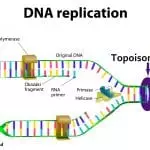[Originally published as Soft Tissue Showdown]
Since Dr. Mary Schweitzer shocked the paleontological community with her discovery of what appears to be soft tissue in a dinosaur fossil, scientists rushed to find more examples of such soft tissue in fossils that are thought to be many millions of years old. They were apparently successful (see here, here, here, here, and here, and here).
Reactions to these finds follow one of three schools of thought.
- Some in the scientific community (like myself) believe that the soft tissue is from the creatures that made the fossils and is therefore evidence that the fossils are not millions of years old, since there is no plausible mechanism by which soft tissue can stay soft that long.
- Some believe that the soft tissue is from the creatures that made the fossils and are seeking a means by which it could stay soft for millions of years. So far, those attempts have not been successful (see here, here, and here).
- The rest accept the seemingly obvious fact that soft tissue cannot possibly stay soft for millions of years and therefore argue that the soft tissue that has been found cannot be from the creatures that made the fossils. The results of a recent study at least partially support the view of those in the third camp.
The authors excavated dinosaur bones along with the surrounding rock and took pains to make the excavation as sterile as possible, using heat and chemicals to remove any living organisms from the materials being collected. The fossils ended up coming from a Centrosaurus, which is similar to a Triceratops. They then examined both the bones and the surrounding rock, looking for organic substances.
Not surprisingly, they found a lot.
Interestingly, there was a lot more organic substance in the bones than in the rocks, and the chemical nature of the organic substance found in each source was different. So there is something special about the organic materials found in fossils. However, the authors specifically tried to detect collagen, a protein that has been found in many other dinosaur bones and is common in animals.
They found none.
They also looked for DNA and found it both in the surrounding rock and inside the bone. However, the concentration of DNA was significantly higher in the bone, indicating once again that there was something special about the inside of the bone. They looked for and found a gene (16s rRNA) that is in bacterial DNA. It was both in the surrounding rock and in the bone, but once again, there was a difference in the actual sequence of the gene between the DNA found in each source.
They also did carbon-14 dating on the organic material. They found more carbon-14 than expected, since there shouldn’t be any carbon-14 in a sample that is millions of years old and free from contamination.
Of course, they interpreted this as evidence that the organic material is mostly not from the bone itself, since they are assuming the bone is millions of years old. Interestingly enough, their samples tested similar to the dinosaur bones that were excavated by creationists. However, the creationist samples were dated using a chemical, bioapatite, that is specifically related to bone and is not produced by bacteria.
The authors also noted that when they examined the organic material with fluorescence microscopy, they found “aggregates” that looked a bit like cells and fibers. Although it was never explicitly stated, the implication is that the studies which have produced microscopic images of cell-like and fiber-like structures might be misinterpreting what they found. Those structures might be biofilms left by modern bacteria.
In the end, the authors propose that fossil bones attract a specific community of bacteria that are different from the bacteria that live in the surrounding rock. They state:
The analyses presented here are consistent with the idea that far from being biologically ‘dead,’ fossil bone supports a diverse, active, and specialized microbial community. Given this, it is necessary to rule out the hypothesis of subsurface contamination before concluding that fossils preserve geochemically unstable endogenous organics, like proteins.
This means that when scientists look for soft tissue in dinosaur bones, they need to rule out contamination by bacteria (and fungi) before thinking that they have tissues from the animal that left the fossil behind. The authors rightly do not say that previous claims of soft dinosaur tissue are wrong, but they give reasons as to why they might be wrong. In the end, it is clear that they are very skeptical of the claims.
I am willing to believe that some soft-tissue-in-dinosaur-fossil claims might be the result of contamination, but I find it hard to believe that they all are. In the cases where the cells in the soft tissue have been imaged, they look nothing like bacterial cells or the biofilms that bacteria leave behind. Instead, they look like red blood cells and bone cells (see here, here, and here). It is hard to imagine how those cells could be the result of contamination.
However, it seems very clear that in this dinosaur fossil, there is no soft dinosaur tissue. Hopefully, other studies like this will be done. If there really is soft dinosaur tissue in some dinosaur fossils, this kind of study should also eventually find it. If not, perhaps all the soft tissue claims really are wrong.
I predict that if several more studies like this one are done, at least one of them will find soft tissue that can be confidently identified as belonging to the animal that made the fossil.







